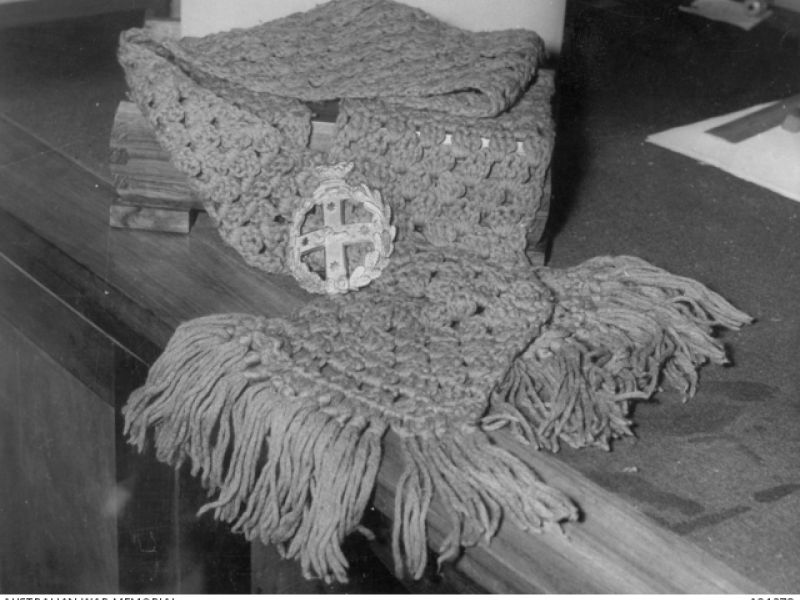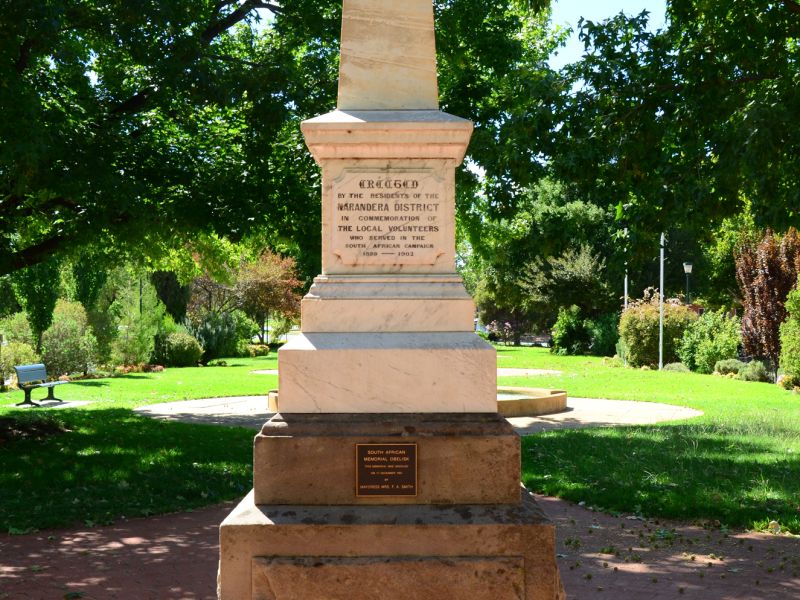The Queen's Scarf
In the last year of her life, Queen Victoria crocheted eight scarves from deep gold Berlin wool. In a corner of each of the scarves she embroidered the Royal Cipher 'VRI' in red silk thread. It was believed that Queen Victoria intended to present her scarves to soldiers for gallant conduct in the field, however, she died before she could do so. Of the eight scarves made, four were intended for British soldiers, the other four to go to men serving in the Colonial Forces. Four distinguished private soldiers from Australia, Canada, New Zealand and South Africa were selected. The Australian recipient was Trooper Alfred Henry Du Frayer of the 1st New South Wales Mounted Rifles.
Du Frayer was born in Victoria in 1871. He was educated in Melbourne and after finishing school worked on his uncle's property in Queensland, before moving to Narrandera in New South Wales. In 1899 he enlisted for service in the Boer War.
In South Africa he saw action at Poplar Grove, Dreifontein, Karee Siding, Vet River, Zand River, Pretoria and Diamond Hill. He was awarded the Queen's Scarf for bravery for an action which took place on 11 April 1900. The action occurred when the patrol he was in was approaching a farmhouse flying a white flag. Although they were cautious they were nevertheless fired upon by a party of Boers.
A member of the patrol was wounded and Du Frayer dismounted, rallied the man, remounted and then got him up onto the horse behind him. Du Frayer was exposed to heavy fire from the Boers but was able to get both of them out of danger.
Some of the recipients of the Queen's Scarf later claimed it was of equal standing to a Victoria Cross, although this was not the case, nor were they entitled to use 'QS' [Queen's Scarf] as a post-nominal.
In May 1901 His Royal Highness the Duke of York, the future King George V, visited Australia. He presented Du Frayer with his scarf at a military revue in Centennial Park, Sydney. The length of the scarf lent itself to being worn in the same way as a sergeant's traditional sash, over the right shoulder with the fringed ends secured over the left hip. Du Frayer was photographed wearing the scarf on two separate occasions, once with the scarf over his right shoulder and once with it over his left shoulder.
After the war Du Frayer organised and accompanied a number of shipments of Australian cattle to South Africa. He subsequently married and settled there. Du Frayer enlisted with the South African Special Service Company during the First World War, serving as a major. As a result of his service he was made an Officer of the Order of the British Empire early in 1919. Du Frayer later moved to Tanganyika (now Tanzania), where he died in 1940. He was buried with military honours at Old Shinyanga in the Lake Province.
Source: AWM website

 Henry C Moulds
Henry C Moulds